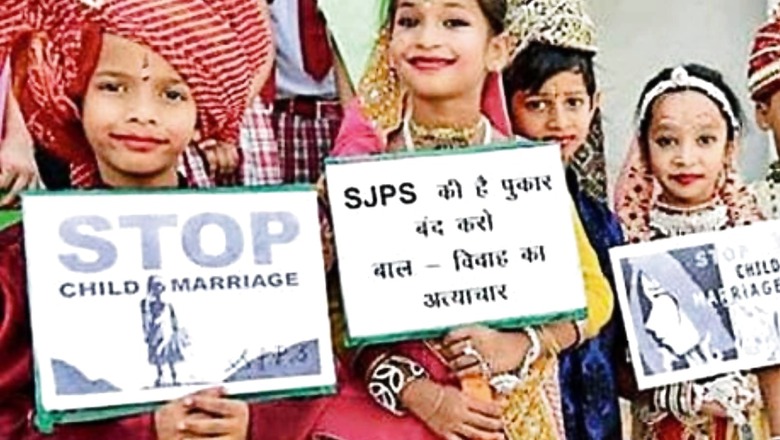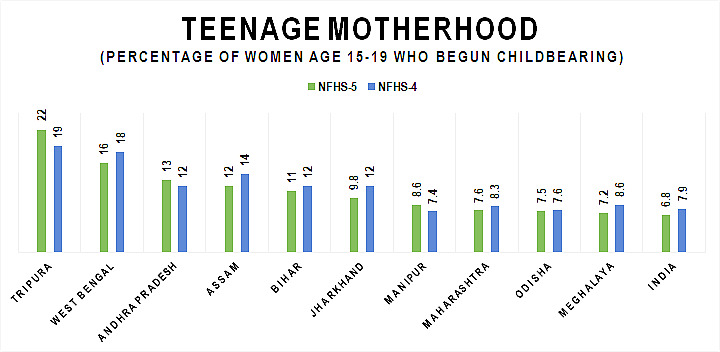
views
India has reported a drop of over one per cent in teenage childbearing in the last five years even though Tripura, which remained on the top, has recorded a jump of three per cent during the said period, official data analysed by CNN-News18 shows.
As per the National Family Health Survey-5 (2019-21), Chandigarh is the only State/Union Territory which has less than one per cent of teenage childbearing. According to the NFHS-4 (2015-16), the number was over two per cent.
In terms of India, the level of teenage pregnancy declined slightly between 2015-16 (8%) and 2019-21 (7%). During the NFHS-3 (2005-06), teenage childbearing stood at 16 per cent at India level.
NFHS-5 says that in India, nearly seven per cent women aged 15-19 have begun childbearing – five per cent of women have had a live birth and two per cent of women are pregnant with their first child.
States that topped the chart in teenage pregnancy during the NFHS-5 were Tripura (22%), West Bengal (16%), Andhra Pradesh (13%), Assam (12%), Bihar (11%), and Jharkhand (10%). As per NFHS-4 (2015-16), Tripura (19%); West Bengal (18%); Assam (14%); and Bihar, Jharkhand, and Andhra Pradesh (12% each) had the highest levels of teenage pregnancy than other states and union territories.

The NFHS-5 survey was conducted in around 6.37 lakh sample households having 27.86 lakh individuals. It shows that teenage pregnancy is relatively high in rural areas. Eight per cent of women in rural areas in the age group 15-19 have begun childbearing.
It also says that the level of teenage pregnancy decreases with an increasing level of schooling. Eighteen per cent of women aged 15-19 with no schooling have already begun childbearing, compared to only four per cent of women who had 12 or more years of schooling.
The report also suggested that childbearing among women aged 15-19 decreases with the level of wealth. Only two per cent of teenage women in the highest wealth quintile have begun childbearing, compared with 10 per cent of teenage women in the lowest wealth quintile.
“Teenage childbearing is higher among scheduled tribe women aged 15-19 years (9%) than the other three caste/tribe groups,” the report said, adding that teenage childbearing is higher among Muslim women aged 15-19 years (8%) than the other religious groups.
“More than half (53%) of currently married women age 15-19 have already begun childbearing.”
Interestingly, Lakshadweep had zero teenage childbearing during the NFHS-4 but has jumped up the ladder with 1.1 per cent teenage childbearing in the current report.
“The marriage of girls at young ages in India leads to teenage pregnancy and motherhood. Young women who become pregnant and have births experience a number of health, social, economic, and emotional problems. In addition to the relatively high level of pregnancy complications among young mothers because of physiological immaturity, inexperience associated with child care practices also influences maternal and infant health. Moreover, an early start to childbearing greatly reduces the educational and employment opportunities of women and is associated with higher levels of fertility,” the report reads.
The NFHS suggested that information on fertility preferences can help family planning programme planners assess the desire for children, the extent of mistimed and unwanted pregnancies, and the demand for contraception to space or limit births.
Read all the Latest India News here




















Comments
0 comment